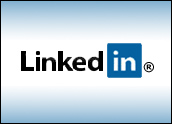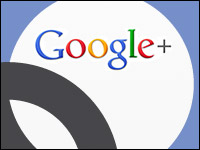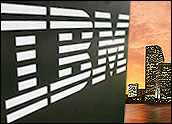
As the one major social networking site that actually has gone public, LinkedIn is facing more pressure than its competitors to produce revenue and ultimately turn a profit.
Because it now answers to antsy anonymous shareholders — rather than somewhat more patient venture capitalists or angel investors — LinkedIn has to make money now.
That could explain why the site that’s known as the premier social network for business professionals has made a couple of recent changes that could be interpreted as attempts to cast itself in Facebook’s image.
One of those changes was a smart move that would make sense for any social networking operator. The second one was simply a bad idea.
Win Some, Lose Some
The smart move was launching new mobile applications for accessing the LinkedIn platform. The bad idea was unveiling a new advertising program that made it look like individual LinkedIn members were endorsing the products being advertised.
The mobile apps make sense because mobile devices are the future of computing, and any website hat wants to remain relevant going forward must be mobile-friendly.
With that in mind, LinkedIn this week unveiled new client applications for iOS — which powers the iPhone and iPad — and Android. These are the two operating systems that are on the lion’s share of the mobile devices currently in use across the globe — and that’s likely to be the case for the foreseeable future. So, it makes sense for LinkedIn and other social networks to be compatible with them.
Mobile compatibility actually is becoming more critical to the social-networking experience every day, with the world’s population not only gravitating toward smartphones, but also increasingly shying away from desktop and laptop computers in favor of tablets.
I believe tablets ultimately will prove to be the sweet spot for mobile computing, offering the right combination of portability and functionality. Smartphones are nice for checking email, reading and sending tweets, but anyone wanting to get real work done while on the move will opt for the larger screen size of a tablet any day.
It Pays to be Tablet-Friendly
LinkedIn, given its status as the place for professional networking, clearly needs to be tablet-friendly, and its iOS app gives it compatibility with the iPad, which continues to obliterate the competition in the tablet space.
Having an iPad-friendly app also gives LinkedIn an edge over Facebook, which has yet to release an app for that device.
I tested the LinkedIn app on my iPad and found it pleasant to use. In fact, after working with it a couple of days, I prefer it over LinkedIn’s desktop interface.
The iPad app groups my entire LinkedIn universe into four attractive-looking boxes:
- Updates
- Profile
- Inbox
- Groups
The profile is a view of my own LinkedIn profile. The Inbox is, of course, any mail sent to me through LinkedIn, and the Groups are connections to various groups I have joined.
The Updates area is essential messages that people in my network have broadcast. Most of those messages, incidentally, are merely coming from those individual’s Twitter feeds. The interesting thing about the Update area is a space labeled “LinkedIn Today,” which is essentially a newsfeed.
LinkedIn introduced this feature — which imitates a similar piece of Facebook functionality — in March. It is supposed to present users with news stories related to groups they are following or discussions that are taking place in their networks.
You also have the ability to share these articles with members in your network. There is one aspect of this feature I find annoying. You can only email articles to people in your LinkedIn network. You can’t even email them to yourself for reading later.
Improving Stickiness
My personal annoyances aside, I believe this feature can help LinkedIn improve the stickiness of its site, which could go a long way to helping it boost advertising revenue. There is one area in which LinkedIn needs to be careful in deploying it, however.
Once again, going back to its status as the professional networking platform, it needs to make sure the news being fed to users is relevant to their profession. Most of the time, I get articles that I find useful from a professional standpoint. Earlier this week, however, I logged in to LinkedIn and was presented with three articles about Abercrombie & Fitch asking the guy known as “The Situation” from the “Jersey Shore” reality TV show to stop wearing its clothes.
I don’t watch reality shows on TV, and I don’t want them creeping into my online world — especially in a place where I’m expecting to have strictly professional discourse. I don’t know if the discussion in my network that day had somehow drifted to this topic, or if LinkedIn was trying to boost traffic by adding some general consumer news.
I hope it was the former. If it was the latter, that’s dangerous territory for LinkedIn to enter. It should leave that type of news to Facebook and Twitter.
Placing Users in Ads
LinkedIn also would do well to stay away from the Facebook-like ad campaign that came to light last week, when users started seeing their names and pictures embedded in ads for various products.
The explanation was that these users had either recommended the product or were following the company associated with the product, and a new privacy policy had been issued noting that user information might be used in that manner.
I don’t want to get into a discussion about how often — or how well — users read privacy policies. Suffice it to say I think it’s a bad idea to embed anyone’s name or photo into an ad without having them agree to it writing. I think people are actually supposed to get paid for having their likenesses used in that fashion.
Act Like an Adult
In any event, LinkedIn responded to the backlash by altering the policy to include only links to profiles of people following an advertiser rather than listing their names and displaying photos. It also reminded us all, once again, that we always have the option to opt out of any such campaigns.
What LinkedIn also should do, particularly as it looks at its long-term business prospects, is to remember that it is not Facebook or Twitter. It’s a different type of social network, and there is nothing wrong with that.
One of the best descriptions I’ve seen of the social networking landscape was on Inc.com, which described Facebook as the starting high school quarterback rocketing to a career in the NFL, while LinkedIn was the studious introvert headed to an Ivy League school.
LinkedIn would do well to remember that in the competition between the high school quarterback and the bookworm, the bookworm generally fares better when the two become adults.
Be the adult, LinkedIn. Leave the foolishness to Facebook. In the long run, investors are likely to take you more seriously.











































Great article here. I AM a recent newcomer to Facebook, resisting joining for over a year or so. I joined for the games and to keep in contact with friends, family, and recent classmates, not for professional reasons which I leave for sites like LinkedIn. I agree with the author of this article, Sidney Hill, that LinkedIn should remain with a more professional image to attract serious business investors.
Mobile apps, yes. But, Facebook has its own unique "social feel" that works for it. Make no mistake this is not by accident, it is by design. For example, Facebook’s newsfeed is quite open for any discussion which works fine if you have a trusted group of friends and family and links to them. It is certainly easier than CCing a whole email contact list. But, it is bit too open for professional discourse in my opinion and caution sharing anything, personal or professional, in this newsfeed should be the order of the day. In fact, I use the messaging system for most one-to-one communication on Facebook which I feel much more comfortable doing with some information.
It is tempting to simple follow the most popular social network concepts, trying to grab more market share by adopting the latest and greatest idea. But, I believe the designers and marketers at LinkIn can come up with their own ideas to keep evolving with its own unique "signature" and attract the kind of investors and members that will appreciate their efforts.